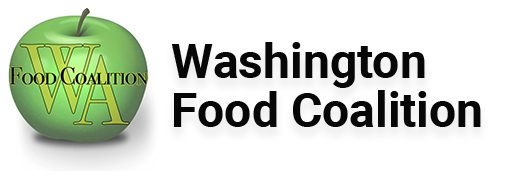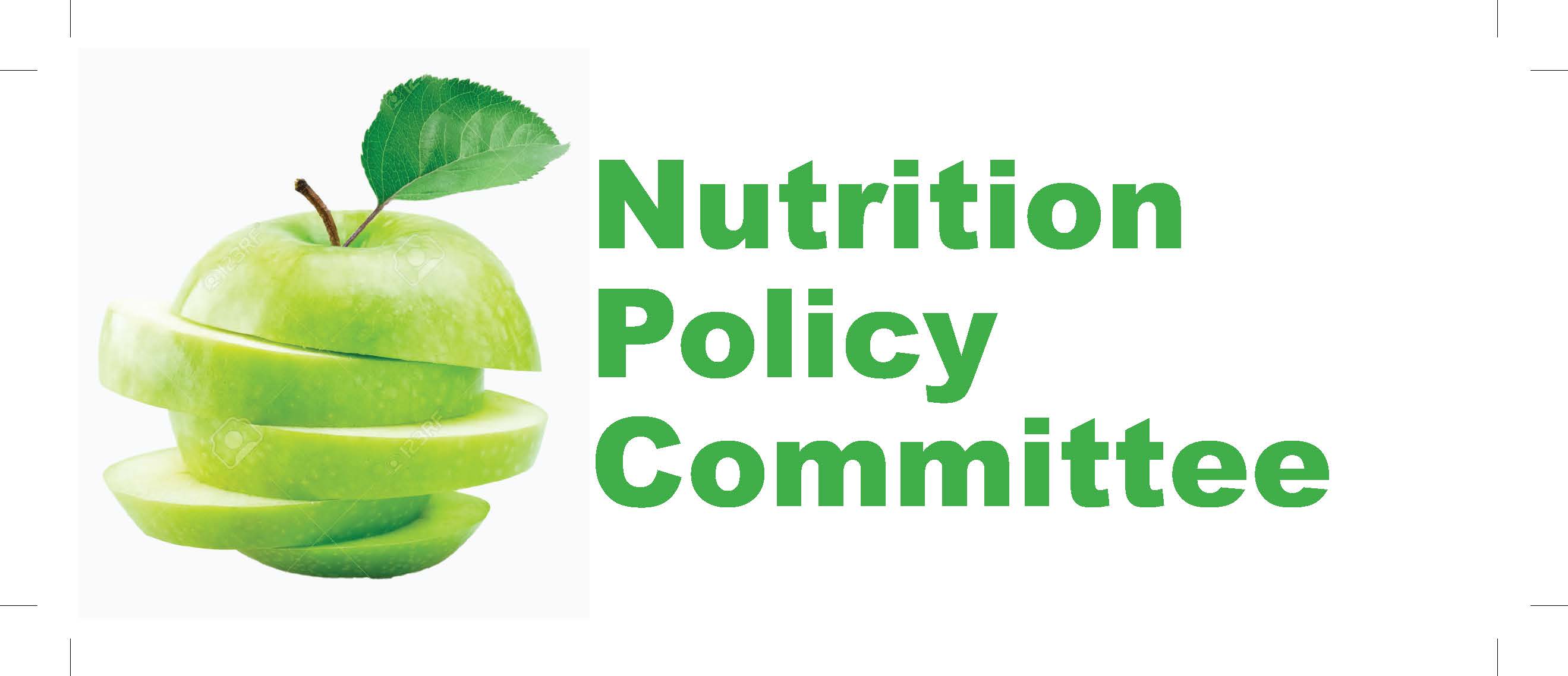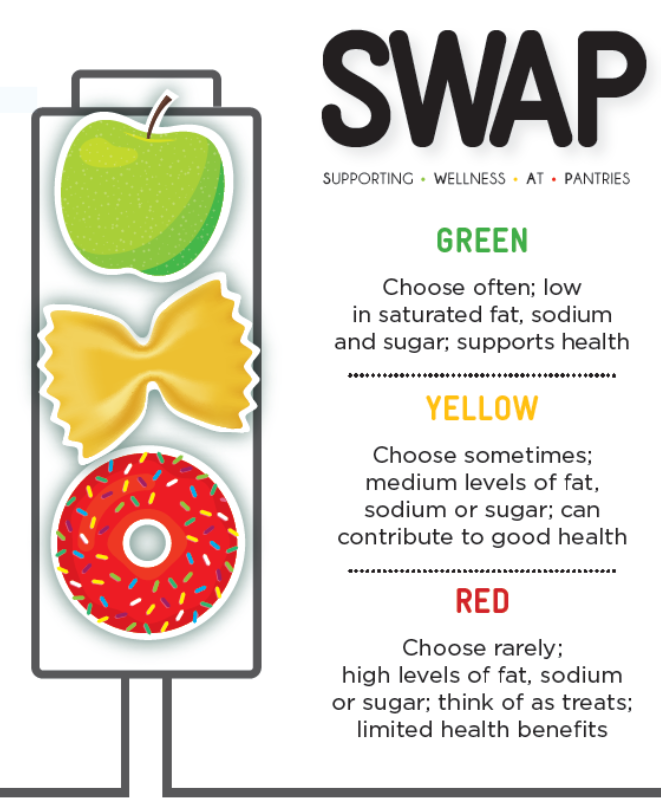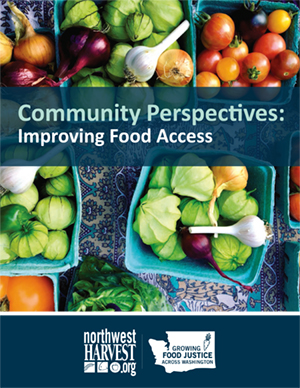|
For more information on the coalition's work, please contact Dana Cordy at [email protected]
SWAP calculator See more about SWAP below. WFC Nutrition Policy Guidelines Purpose: The Washington Food Coalition is committed to increasing the availability of nutrient-dense and culturally representative foods throughout our member network. We acknowledge the vital influence nutritious, whole foods have on the holistic wellbeing of the land and people. A lack of these foods negatively impacts the health of the communities we serve. We recognize the existence of systemic injustices within the food system and work to ensure historically underrepresented voices drive our decision-making. The WFC calls for change within the larger food system while considering the unique impact that donors, corporations, the food industry and government have in creating a healthier food landscape across Washington State. To achieve this purpose, Washington Food Coalition (WFC) has identified specific goals we encourage our members to achieve: ● Develop nutrition policies and standards which take into account the unique needs of their customers. To support our members’ pursuit of these goals, the WFC Board will establish a Nutrition Policy Committee (supported by WFC staff) to oversee the following action steps: ● Maintain a food purchasing guide to help members identify sources of healthy and culturally relevant food products. Additional Resources to Support WFC Members:
Administration & Implementation: WFC Nutrition Policy Guidelines Formation Implementation Plan In Spring 2022, WFC will share the developed guidelines with WFC members and invite feedback through a survey and targeted follow up. WFC will share updates on the policy and resources to help members implement the policy at WFC conferences and other training opportunities. Food and Nutrition Policy Purpose and GuidelinesWhy do you care? What are your guiding principles? Consider health equity, choice, unique needs of your participants or program. Also note basic guidelines you use as a reference. We recommend those from Healthy Eating Research: her-food-bank_FINAL.pdf (healthyeatingresearch.org) Example:
At xxx, we recognize the important role that food and nutrition play in our participants’ health. In addition to breaking down barriers to food access, we are committed to offering our participants choices that enable positive health outcomes, help prevent diet-related chronic illnesses, and respect the cultural needs and dietary preferences of the communities we serve.
Our Food and Nutrition policy will demonstrate our commitment to the quality of food we offer our participants and serve as our guiding principles. We will utilize the Healthy Eating Research (HER) Nutrition Guidelines as a tool to guide our nutritional priorities.
Overall Nutrition Commitments Note any foods you’d like to emphasize or any that you’d like to exclude, based on your principles and the guidelines you choose.
Example: In order to prioritize the health of our participants we commit to offering xx% of our items from the choose often categories. In particular we will aim to increase fresh fruits and vegetables, whole grains, lean protein, and low-sodium options. We also strive to distribute items that meet the cultural and dietary needs of the diverse and changing population that we serve.
Food Purchases Outline parameters and goals for any purchases that are made by the organization and how you will prioritize them.
Example: When funding is available, we commit to purchase items that are aligned with our commitment to nutrition and reflect the cultural diversity of our community. We will prioritize fresh vegetables and fruit, cooking staples, and items on the “choose often” list of the HER guidelines.
Food Donations Differentiation of guidelines may be appropriate for donations received. If there are items that you will not accept, include that here. You can also state how you will communicate your preferences to donors.
Example:
Rather than turn away donations we aim to guide donors toward our needs. To that end, we have created graphics that can be sent to donors. These highlight popular items that we use in our programs or that participants request and prioritize low-sodium and low-sugar options.
Special Programs If you have specialized programs that you want to call out you may want to include those in a separate space. For example, if you have a mobile program, backpack program or home delivery that needs specialized guidance.
Example: In our weekend backpack program, we are committed to prioritizing snack and meal options for students that are nutrient dense and low in sugar and sodium. As we expand our programs we are committed to meeting the specific dietary needs of different sites and providing fresh produce, nutrient-dense items, and cooking staples.
Broader Commitments Include other information here related to health or nutrition goals that you are striving for, as applicable. Example:
We will aim to engage in participant-guided activities that meet the needs of our participants which may include recipe provision, taste tests, or cooking demonstrations. We also will connect participants to other food resources to fit their needs as appropriate, such as SNAP and WIC programs. 1) Schwartz M, Levi R, Lott M, Arm K, Seligman H. Healthy Eating Research Nutrition Guidelines for the Charitable Food System. Durham, NC: Healthy Eating Research; 2020. Available at http://healthyeatingresearch.org Other Resources: 1. Supporting Wellness at Pantries (SWAP)
The goal of SWAP is to create an easy to use, easy to understand nutrition ranking system to categorize food offered in food pantries, and to encourage clients to choose healthy items. Why is this important?•More than half of the families who visit food pantries have a household member with high blood pressure and one-third have a member with type II diabetes.
•These chronic diseases can often be prevented, managed, and reversed through the foods we eat. This system will help clients make healthy choices, and influence the types of food donated to the pantry.
How does SWAP work?To rank foods, SWAP uses this information from the nutrition food label: •Saturated fat
•Sodium
•Sugar
Why only these nutrients Supporting Wellness at Pantries (SWAP) is a program of Foodshare. SWAP was developed by researchers at the Univ. of Saint Joseph (USJ) Department of Nutrition and Public Health and SNAP-Ed program, and was a collaboration between USJ, the UConn Rudd Center for Food Policy & Obesity, and the Council of Churches of Greater Bridgeport. Funding to develop SWAP was provided by USDA’s Supplemental Nutrition Assistance Program, and the Johns Hopkins Global Obesity Prevention Center. Instructions for Use:
1. Input the product’s name in the “Food Name” column. Be sure to include details of the product to best identify it. If you don't know which "Food Group" it falls under, look at the "Guide for Ranking Food with SWAP".
2. Enter the saturated fat, sodium and sugars. You can find this information by looking at the Nutrition Facts label on the food.
3. Please make sure to double check your entries for any typos.
4. Keep in mind how you enter a product name. For example, if you enter "Fig Bar" vs. "Fig Newton". Another example is "pineapple" vs. "canned pineapple". Everyone will have a unique method for deciding how to name a product - keep this in mind!
5. Please be mindful of what other people have entered onto the spreadsheet and do not delete their work.
This document will be edited by many organizations and therefore may have typos, omissions or incorrect information. Washington Food Coalition will review this document on a regular basis to ensure items are ranked appropriately according to SWAP standards. However, at this time there is no one, correct method for inputting a product and we cannot guarantee information on the spreadsheet is accurate. This is a work in progress and designed to provide WFC members with a shared space in order to save time ranking foods that may have already been ranked by another program.
Simple Rules of Thumb for SWAP
Food that is Green • All fresh fruits and vegetables • Whole eggs • Whole grain bread, pasta, tortillas • Brown rice • Skim, 1% and 2% milk • Plain water, coffee, tea Food that is Yellow • 100% fruit juice • Regular “white” bread, pasta, tortillas • White rice • Whole milk • Most peanut butter • Plain dried fruit such as raisins Food that is Red • Desserts such as ice cream, cookies, cake • Candy • Most processed / packaged snacks • Regular soda and juice drinks Food that is NOT ranked with SWAP • Condiments like salad dressings and sauces • Cooking Staples such as flour, sugar, oil, spices • Baby food • Nutrient supplements such as Ensure or protein powders Questions? Please contact Dana at [email protected]
https://docs.google.com/spreadsheets/d/1W5f9tKsaeOVcrUA8iV1BrN7DijijMLcZ/edit#gid=883185887
|


 What is SWAP?
What is SWAP?
 3. Healthier Food Donation Guidelines for Retailers and Distributors
3. Healthier Food Donation Guidelines for Retailers and Distributors 4. Community Perspectives: Improving Food Access
4. Community Perspectives: Improving Food Access Our work is generously supported in part by the Washington State Department of Agriculture, Food Assistance programs. In accordance with Federal law and U.S. Department of Agriculture policy, the Washington Food Coalition as an institution is prohibited from discriminating based on race, color, national origin, sex, disability or age.
Our work is generously supported in part by the Washington State Department of Agriculture, Food Assistance programs. In accordance with Federal law and U.S. Department of Agriculture policy, the Washington Food Coalition as an institution is prohibited from discriminating based on race, color, national origin, sex, disability or age.